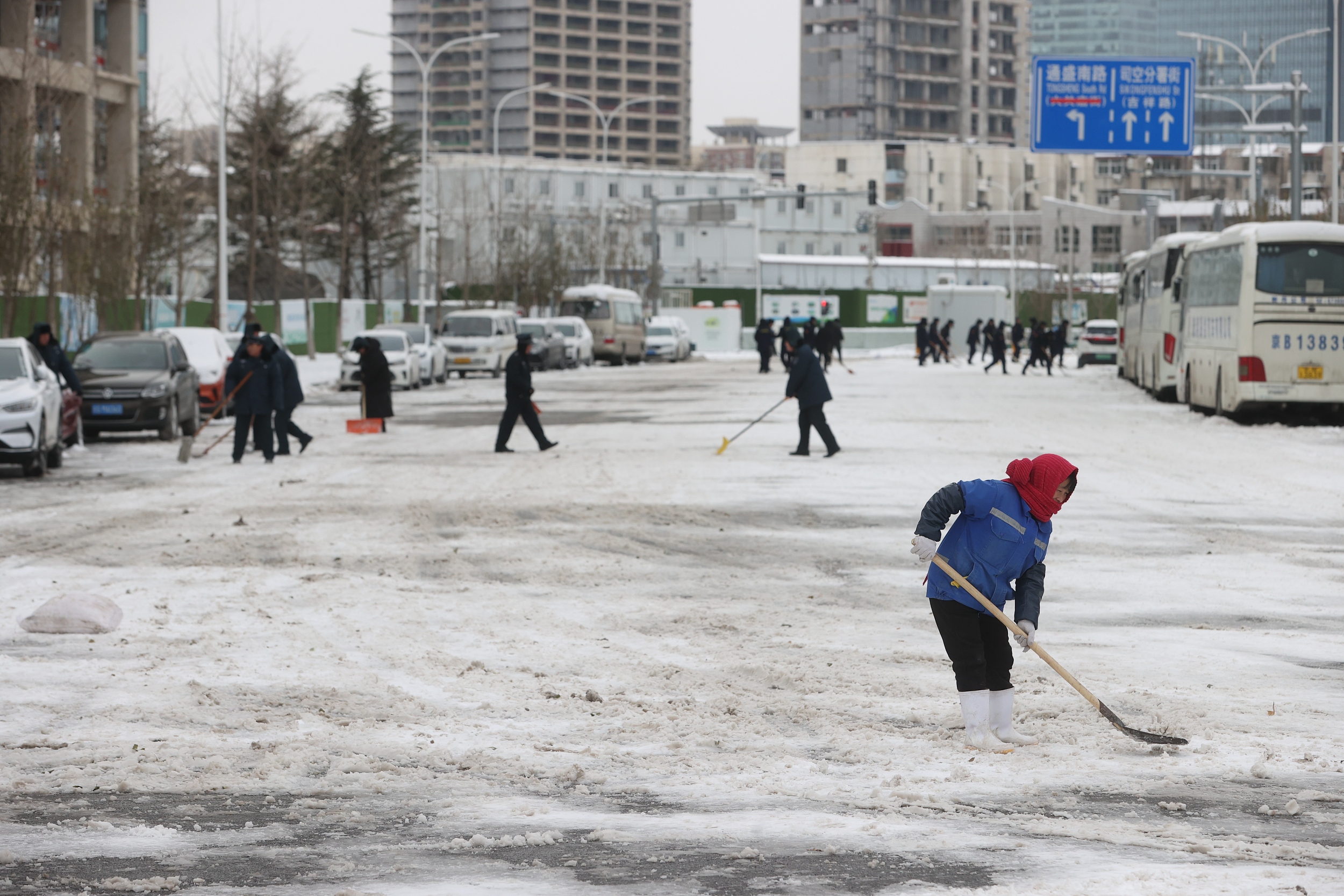Low Temperatures in Warmest Year: Reasons

Workers clear snow after heavy snowfall to ensure smooth road traffic in Beijing. (PHOTO: VCG)
By ZONG Shihan
The World Meteorological Organization announced at COP28 a month ago that 2023 was the warmest year on record. Its report states that the ongoing El Niño event is expected to last until at least April 2024, leading to further increases in land and ocean temperatures. Yet while 2023 heated up, China has recently experienced ongoing low temperatures. So what are the reasons?
According to statistical analysis, China's winter temperature is generally warmer during El Niño events, but there are frequent phased cold air activities, which means that there are significant fluctuations in temperatures.
The intensity of cold air processes is not only affected by El Niño, but also has a strong relationship with the splitting of the Arctic polar vortex and disturbances in the mid- to high-latitude westerly winds.
Since last mid-December, the Arctic polar vortex has split into two centers, located over Greenland and Siberia. Accompanied by the westerly winds over Eurasia, the Siberian high is unusually strong, causing most of China to shift from prevailing southerly winds to northerly winds. The southward movement of cold air has led to a sharp drop in temperatures.
Moreover, El Niño strengthens the western Pacific subtropical high, allowing more water vapor from the tropics to be transported to China. Therefore, the combination of cold air from middle and high latitudes with abundant water vapor conditions from low latitudes has led to widespread snowfall in eastern China. The increase in clear sky albedo caused by snow on the ground also slows down temperature recovery.
According to the National Climate Center of China Meteorological Administration, from January to February 2024, the intensity of the East Asian winter monsoon will generally be weaker, with temperatures across most of China close to normal. However, there will be significant temperature fluctuations, and another drop in temperature may occur.
A cold snap is a short-term weather event. Only by considering whether the average temperature throughout winter is significantly higher or lower than the historical average temperature for the same period, can a determination be made whether it is a warm or cold winter.







